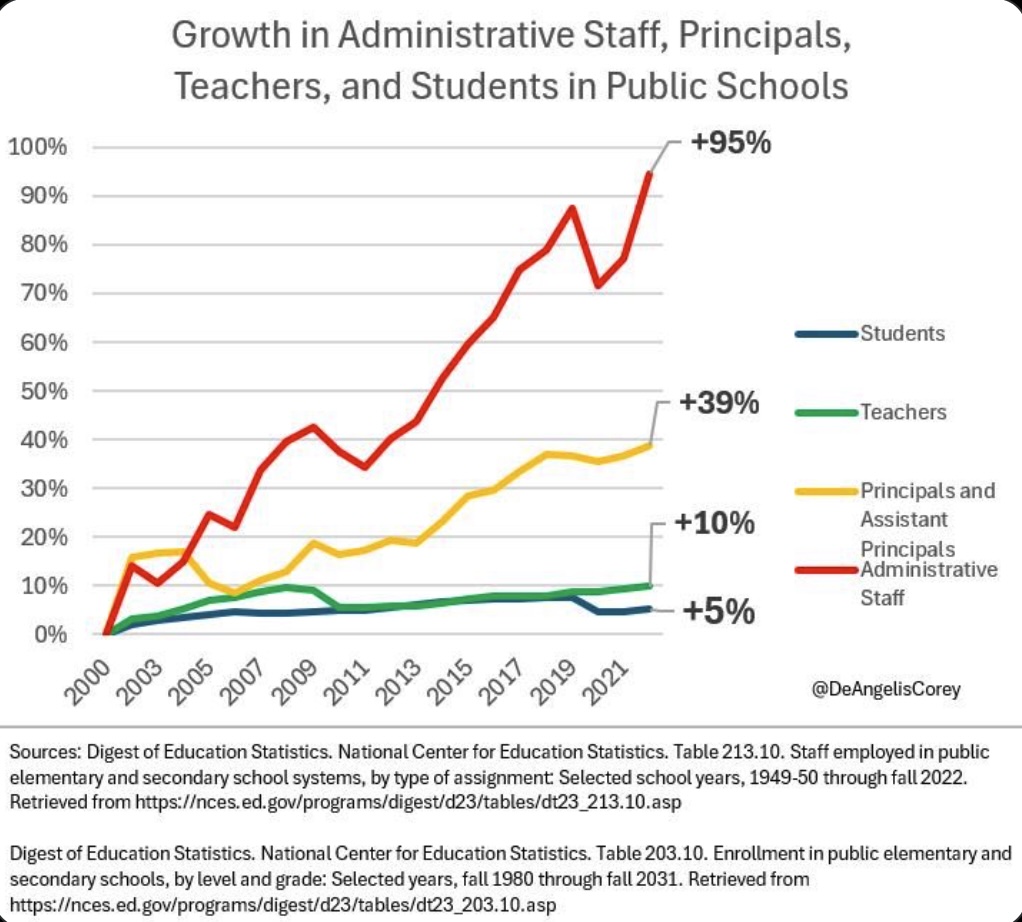(The Lion) — America’s public schools are in a spiraling student achievement and cost crisis – but thanks to innovations in private and homeschooling, help is definitely on the way.
A new report says 40% of public-school kids were behind in one or more subjects at the start of this school year.
That’s down slightly from 2022, when 47% were behind, but still more than were below grade level prior to the COVID-19 pandemic when nearly 1 in 3 students (32%) were behind.
The data is even worse for poor and minority students, where 52% of low-income students and those attending schools that are more than 75% minority were behind in at least one subject.
Smaller schools didn’t fare well either, with 48% of students behind in schools with fewer than 300 students – meaning the problem exists in both rural and urban areas.
The report found minority students suffered greater learning loss from pandemic school closures, which is tragic enough. But even larger questions exist, such as:
- Are these numbers normal, or even slightly normal?
- Do parents, especially those of poor and minority children, just have to accept them?
- Is there a better way?’
The Lion has covered how school choice began primarily as a way to help poor and minority students trapped in failing schools. Such was the genesis of Milwaukee’s first-in-the-nation school choice program 35 years ago.
Since then, school choice has spread across the country to include students of all income levels and locations, with 13 states enacting universal choice, meaning every student in the state is qualified to participate.
This boom has coincided with the massive surge in homeschooling and micro schooling (usually small, creative learning environments that are often hosted in a church or home).
As more and more families declare their independence from government schools, either through homeschooling or school choice programs – or sometimes both, as is the case in Utah – it’s time to take a critical look at the success, and failure, of government schools.
Overpriced
Amid the decline in learning, the cost of public education has soared. Particularly troubling is the rise in spending on administrators and external “experts” and consultants – people who don’t directly touch the lives of students.

Yet despite this 95% increase in administrative spending over the past two decades, student performance still lags and shows little sign of achieving true proficiency.
Maybe we’re going about it all wrong. Maybe we’re trusting in the wisdom of so-called experts instead of what has worked all along: a focus on families, children and community. Maybe the root of our problems isn’t diversity services or better-trained teachers, but that our priorities are off.
What if belonging is the key to becoming? What if love really does win and community unlocks a child’s potential more than a teacher with two master’s degrees?
Stories such as the one Unschooled author Kerry McDonald told at a conference I attended about a kid who was flailing in public school, only to join a small, Christian learning community and immediately start flourishing.
He was being raised by his grandparents, and they literally wept at their first parent-teacher conference at the new school when the teachers started praising their grandson because they’d never heard anything good about him at any previous meetings at the public school.
The boy absolutely thrived in his new environment that treated him like an individual, appreciated his good qualities and welcomed him as part of the community from the start.
I’ve covered special education schools started by Christians that have seen students come off their IEP (Individualized Education Plans) and not need many of the services that were mandated in the public school. What changed? Belonging. Values. A focus on the child’s wellbeing above “educational outcomes.”
Once those priorities were straightened, you know what happened? Education followed! Once safe, loved and accepted, the child was free to learn and excel. No longer fighting the system, they were part of something they, and their family, could believe in. And everyone was better for it!
Such is the beauty of homeschooling, micro schooling and school choice.
No “magic bullet”
I’ve given up on the public school finding the magic-bullet program, training or seminar that will right its wrongs and prepare the way for student success. It almost seems the harder we try and the more we spend, the worse we do.
The broken system of government schools reminds me of Humpty Dumpty, who sat on a wall, had a great fall and no matter their effort, “all the king’s horses and all the king’s men couldn’t put Humpty together again.”
There is a better way to repair the shattered shell of education in this country, and it doesn’t cost $15,000-$30,000 per year, per student.
Private schooling, whether it be homeschooling, micro schooling, or even some traditional private schools, have long done more with less, proving community and common sense can educate students better than a mass of government bureaucrats ever could.
If more money were the answer, we would have solved the problem long ago.
Clearly something has to change.
The good news is school choice is taking root, with programs existing in all but 16 states, and several states, including Texas and Virginia, seeking to add to or expand their programs this year to include millions more students.
At the same time, microschools and other creative learning communities are popping up everywhere, giving parents and communities control of where and how their children are educated. And the movement toward homeschooling continues strong, even after the COVID-19 pandemic.
An education revolution is sweeping the nation. As America prepares to celebrate its 250th birthday in 2026, let’s celebrate efforts currently underway to liberate millions of students from inept government schools that no longer represent their and their families’ best interests.
The redefining of education couldn’t come at a better time. Some would say it’s right on time.
This year and next, let freedom ring!

